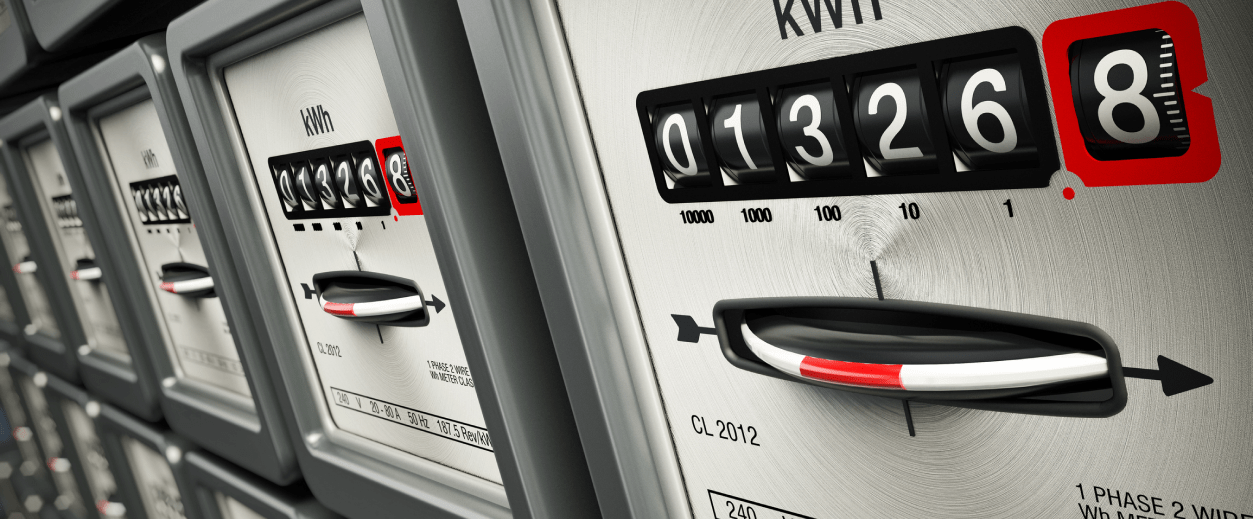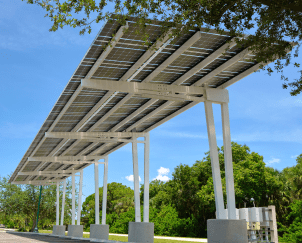

The commercial solar tax credit — officially known as the Investment Tax Credit (ITC) — is a federal incentive that allows eligible businesses to claim a percentage of the cost of their as a credit against their income taxes.
This means businesses can potentially reduce the amount of tax they owe the government by purchasing a solar energy system.*
Initially established in 2006 and most recently renewed in 2022, the commercial solar tax credit has been instrumental in driving solar adoption across various sectors — from small enterprises to large corporations — thanks to its potential to benefit a company’s bottom line and contribute to a greener future.
In this article, we’ll explain everything business organizations need to know about the commercial solar tax credit.
What’s the Commercial Solar Tax Credit Worth?

For solar projects smaller than 1 megawatt (MWac), the commercial solar tax credit is equal to 30% of the cost of the system — this will likely be the case for most businesses. For projects ≥ 1 MWac, the base rate of the commercial solar tax credit is 6%, but that base rate escalates to 30% if the project meets specific Treasury Department labor requirements.*
Assuming a business qualifies for the full 30%, this means if they spend $100,000 on a system, it can claim $30,000 as a federal tax credit.
The ITC is subject to phase-out schedules — however, the 30% rate is in effect through at least 2033, giving even the largest of corporations enough lead time to get their solar projects underway.
The credit is also based on when construction starts, not when it’s finished. This means an eligible business can lock in the 30% rate past 2033 if its solar project commences construction in or before 2033 and makes continuous progress towards completion.
Under a “safe harbor” test, an eligible business will be deemed to have started construction on a project when either:
- It commences physical work on the project, or
- It spends or incurs at least 5% of the total cost of the project.
What Organizations are Eligible for the Solar Tax Credit?
Organizations of all sizes — from small businesses, schools and nonprofits to local governments and large corporations — can take advantage of the commercial solar tax credit if they own their solar system.
Don’t have a tax burden to offset with the credit? Companies might still be able to benefit — eligible tax-exempt entities may claim the credit as a “refundable tax credit” (i.e., a direct cash payment from the federal government). Other entities without a sufficient tax burden can sell the credit for cash to those that do. The cash proceeds from the sale are not taxable income.*


More than just solar, the ITC is available for the following technologies:*
- Fuel cells
- Solar energy
- Microgrid controllers
- Interconnection costs
- Combined heat and power systems
- Standalone battery storage over or equal to 5 kWh
If a business installs and owns one or more of the above and its project is based in the U.S. or its territories, the business may be eligible for the ITC.* Eligible systems must also be used to generate electricity for the business’ own use or for sale to a third party.
It’s important for businesses to consult with a tax professional, or visit the DOE's ITC website, to ensure they meet all necessary criteria.*
How Do Businesses Claim the Commercial Solar Tax Credit?

To claim the ITC, it’s important for a business to keep detailed records of all expenses related to its solar project — including invoices, receipts and contracts.
Businesses will need to file IRS Form 3468 along with the federal income tax return, providing information such as:
- The total cost of the commercial solar system
- The date when the commercial solar system was placed in service
- The percentage of the commercial solar system that’s eligible for the ITC
- The date when construction for the solar system was started and completed
- The amount of electricity that the commercial solar system produces or sells
An eligible business can claim the ITC in the year it places the system in service or carry it forward to future years if it has insufficient tax liability in the year in which it places the system in service. An eligible business can also carry back unused credits to previous years if allowed by law.* Businesses should consult with a professional tax advisor to determine how to best use their credits.*
What Are the Commercial Solar Tax Credit Bonus Adders?
In addition to the ITC’s 30% base rate, the IRS offers three additional bonus credits, potentially adding up to 40% more to the commercial solar tax credit. These bonuses are stackable, which means if a business is eligible for all of them, the potential total credit could be 70%.*
Domestic Content Adder | 10% Bonus Credit
The domestic content bonus is met if:
- 100% of the structural iron and steel is melted and poured in the United States
- A certain percentage of manufactured product components in the solar project are mined, produced or manufactured in the United States.
- That percentage is 40% for projects beginning construction before 2025 and raises 5% every year afterward through 2027.
Calculating the exact domestic content percentage can get tricky, so it’s important for businesses to follow the IRS guidance closely to ensure they adequately qualify for the bonus.*
Energy Community Adder | 10% Bonus Credit
If a business’ project is sited in an area that the Department of Energy (DOE) classifies as an Energy Community, the business could be eligible for an additional 10% bonus credit.
Energy Communities are broken up into three categories:
- Brownfield sites
- Census tracts where a coal mine closed after 1999, or a coal-fired electric generating unit has retired after 2009
- Statistical areas that historically have had a certain minimum percentage of direct employment or local tax revenue tied to the fossil fuel industry and that have had greater-than-average unemployment in the last year
If a business is not sure whether its project is located in an Energy Community, it should refer to the DOE’s official map for guidance. The map is subject to change, but if you start construction on a project in an area that’s eligible at the time, you’ll have safe harbor, and it will be deemed an Energy Community at the time you put the system into service and claim the bonus.
Low-Income Community Adder | 10-20% Bonus Credit
The low-income community bonus applies to projects sited in a low-income community (defined to include all tracts eligible for the New Markets Tax Credit (NMTC) program) or on Indian land. View the DOE's map of NMTCs to see if your project is eligible.
This bonus raises to 20% if the project is a “qualified low-income residential building project” that’s sited in certain federal affordable housing projects, or a “qualified low-income economic benefit project” that offers bill credits to income-verified customers, provided the financial benefit of the project is allocated equitably among the residents.
For either scenario, the solar project cannot exceed 5 MWac.
The low-income community adder is the only bonus that’s not automatically guaranteed if eligibility criteria are met, as there is an annual program cap and organizations must apply to Treasury for the chance to be accepted.
What Are the Benefits of the Commercial Solar Tax Credit?

The ITC has helped the U.S. solar industry grow by more than 10,000% since it was implemented,* creating hundreds of thousands of jobs and billions of dollars in economic activity.

The commercial solar tax credit has many benefits for businesses and other entities that install and own solar systems, such as:
- Reducing the upfront cost of your solar system by up to 30%
- Enhancing your cash flow and profitability by lowering your tax liability
- Increasing your return on investment and reducing your payback period
- Improving environmental performance by reducing greenhouse gas emissions
- Hedging against rising electricity prices and demand charges by generating your own power

The ITC is also beneficial for the solar industry and overall economy, as it:
- Reduces air pollution and mitigates climate change
- Stimulates the demand for solar products and services
- Creates jobs and income for solar workers and businesses
- Diversifies the energy mix and enhances energy security and resilience
- Supports innovation and technological advancement in the solar sector
Go Solar, Get Tax Credits
The federal commercial solar tax credit is a potent tool in driving the adoption of solar energy for businesses. Beyond financial savings, it signifies a commitment to sustainability and can position organizations as forward-thinking leaders in their industry.
Organizations shouldn’t miss out on the opportunity to embrace clean, renewable energy and potentially steer their businesses toward a brighter, more sustainable future.
Even if an organization doesn’t purchase a solar system, Sunnova has competitive pricing with leases and power purchase agreements (PPAs) to satisfy businesses that don’t have or need a tax appetite.

Talk with a Commercial Energy Expert
Get educated about solar for businesses.